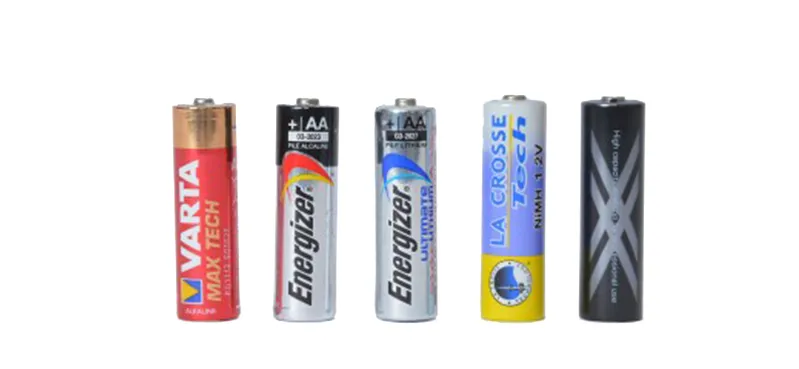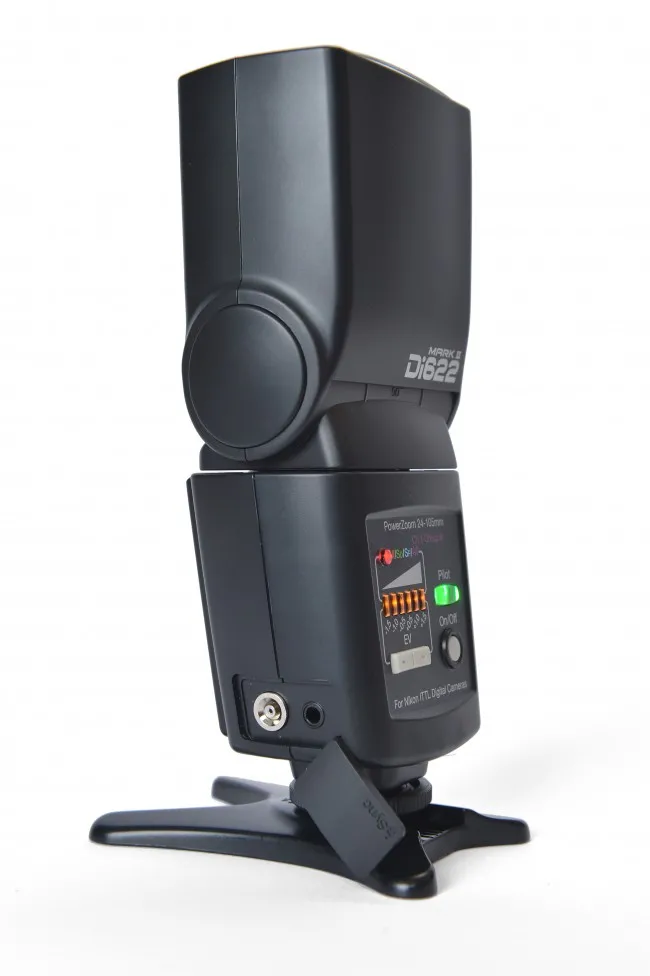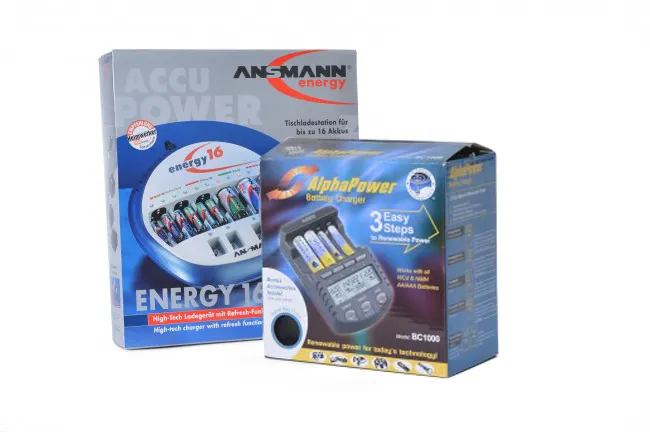
Photo by Robert Jordan, University of Mississippi
Past experiences with lowest-bid AA alkaline batteries and poor performance from rechargeable AA batteries has made me a devout Duracell Alkaline user for years. But battery technology has improved greatly in recent years and I was eager to test some of the new AA battery and battery charger technologies. Armed with three brands of popular single-use batteries, two brands of Ni-MH rechargeable batteries, two different AA chargers and a strobe that closely matches the features of the Nikon SB600 I started my testing. My battery testing methodology was quite simple, four identical batteries were tested using a Nissin Mark II Di622 strobe. The Di622 is comparable to the Nikon SB600 with a guide number of 44 and many of the same modes and features. For this test, the strobe was used exclusively in manual mode at full power.

Firing the Di622 at full-power in manual mode puts the maximum demand on the batteries, reduces the number of variables and simulates how many of us use small strobes off camera. Keep in mind that using TTL mode can greatly increase the number of photos you get from a set of batteries, even if shooting at the same ISO, f-stop and shutter speed. For this test the Di622 was attached to the hot-shoe of a Nikon D3s camera set to 400iso 1/160@f8 and the camera’s internal intervoltometer was set to fire every 15-seconds. The testing continued until the AA batteries were unable to fully-recycle the strobe between shots. The depleted batteries were immediately removed and fresh batteries were inserted in the Di622 to ensure the strobe had not failed to recycle or fire due to thermal overload. First I tested a trio of single-use batteries from three manufacturers. I began with the most inexpensive batteries in the test, the Varta brand alkaline batteries. The Vartas were good for 136 frames. I let the flash cool for two hours and loaded a set of my go-to batteries, Duracell alkalines. The Duracells bested the Vartas, shooting 155 frames. Another two hour cool down for the strobe and the last set of single-use batteries were loaded, Energizer Lithium Ultimates. I had really high hopes for the Lithium batteries and was shocked when they petered out after only 52 frames! I was so stunned that I repeated the test with a second set of Vartas, Duracells and Energizer lithiums. The second round of testing netted nearly identical results. I even tested a third set of Energizer Ultimate Lithiums from another pack purchased in another state to ensure they were not from the same batch and once again got only 52-frames.

Next I tested two brands of nickel-metal-hydride rechargeable batteries and two different Ni-MH chargers. First a little information on the charges tested.
The La Crosse BC1000 charger has set the benchmark for AA chargers with it’s features and ability to monitor and cater to the charging needs of each of up to four AA cells individually. It provides an LCD readout for the charging status of each battery and charges at a default rate of 200mAh for optimum battery life. Charging rates of 500, 700, 1000 or 1800mAh may be selected manually for each cell. The BC1000 can also automatically fully discharge cells and then charge them to their full capacity. Lastly, cells can be fully charged, discharged to measure their actual mAh capacity and then fully charged again.
The Ansmann has the ability to the individual monitor and charge of each of up to 12 AA cells and up to four 9v batteries. It uses Delta V charging control to fully charge each AA cell at a rate medium-high rate of 700mAh and then switches over to trickle charging. It features a tri-color LED light to indicate the status of each cell. The Ni-MH batteries tested were La Crosse’s 2600mAh Ni-MH batteries included with the La Crosse charger (the LaCrosse also includes a set of four AAA Ni-MH batteries as well as adapters to use the AA batteries in devices using of ‘C’ or ‘D’ cells0 and Sanyo’s Eneloop XX professional batteries rated at 2500mAh. The Eneloop batteries are unique in that they ship fully-charged and claim a much lower self-discharge rate over regular Ni-MH cells so they hold a charge much longer.
Round one- The La Crosse batteries were fully charged at the battery-friendly default rate of 200mAh on the La Crosse charger and left to trickle charge overnight. The Eneloop batteries were also charged on the La Crosse charger overnight. The maximum battery temperature measured on the La Crosse charger was 90-f during the 200mAh cycle. After storing the batteries in my office for 40-days, I loaded each set into the flash and commenced testing. The Eneloop batteries proved their ability to hold a charge, providing 60 shots. The La Crosse batteries were unable to completely charge the flash for a single shot. All of the Ni-MH batteries were then charged overnight on the Ansmann charger and tested in the Di622 strobe. Then I charged all the batteries overnight with the La Crosse charger and tested them. I repeated the process for two more rounds, charging overnight and and testing the batteries immediately after removing them from the charger. I let the batteries cool to room temperature before the next round of charging. On Average over all five rounds of testing the Eneloop batteries outperformed the La Crosse, averaging 62-frames, vs 55-frames for the La Crosse.
Conclusions:
- The Vartas performed very well falling only 20 or so frames behind the test leading Duracell batteries.
- I was shocked at the poor performance of the Energizer Ultimate Lithium batteries under these testing conditions. The Lithiums only shot a third of the photos of the Duracell alkalines.
- All of the single-use batteries have been stored in my office after testing over a month ago and as of the time of this article, none of them have leaked.
- All of the Ni-MH batteries provided about half of the capacity of the alkaline batteries, even when slowly charged right up to the testing time.
- The Sanyo Eneloop XX batteries did indeed hold a charge well over the 40-day test, dropping only a dozen frames or so from their best performance numbers.
- If you want to charge up to 12 AA batteries at a time, the Ansmann Energy 16 is the way to go. It’s at the upper end of the price scale at $90, but it shares many of the features of the La Crosse charger and is cheaper than buying multiple La Crosse chargers. It’s 700mAh charge rate should recharge a 2600mAh AA battery in under 4-hours and strikes a good balance between short charging times and long battery life.
- The La Crosse is one of the few available with multiple charging rates from 200mAh-1800mAh so a completely depleted 2600mAh AA battery could be ‘gently’ charged in about 12 hours or ‘aggressively’ charged in as little as 80-minutes. Charging at the slower rates should extend battery life and more fully charge the battery.
- The La Crosse BC1000 sells for about $60 and is the most sophisticated of the three chargers tested.
- If I were going to use rechargeable batteries, I’d opt for the Eneloop XX batteries and the La Crosse BC1000 charger. But I would need to carry at least two sets of Ni-MH to do the work of one set of alkaline batteries.
I do feel guilty about using non-rechargeable batteries from an environmental standpoint, but the prospect of changing out my flash batteries twice as often and keeping up with which ones need charging and keeping all of them topped-off is just more hassle than I want to take on. I’m going to stick with my Duracell alkalines for my strobes until a better option comes along. I do prefer to use lithium batteries in my computer mouse, they are each .25-oz lighter than alkaline batteries and last a very long time in that duty.
The Di622 strobe’s specifications are comparable to the Nikon SB600 and the Di622 features multiple optical slave options, automatic, manual operation with six power levels down to 1/32-power, TTL/i-TTL-BL operation with exposure compensation over 7-stops and even a wireless remote slave option that is compatible with the Nikon Creative Lighting System (channel 1, group A only). The Di622 offers automatic power-zoom, tilting up to 90-degrees and rotation up to 270-degrees. The fDi622 had a wide-angle diffuser panel and bounce reflector that deploy just as they do on the SB600, as well as AF assist beam and rear curtain sync options. The Di622 includes a PC outlet and a great feature not on Nikon strobes, a 1/8 jack for connecting to a radio slave. Other versions of the Di622 offer similar functions with Canon or Sony cameras. I was actually rather impressed with the Di622, I especially liked it’s simple controls, 1/8 jack and price point of only $229.
In my very brief testing, it performed very well in i-TTL-BL, manual, slave and wireless remote modes. It was fired repeatedly for hundreds and hundreds of full-power flashes and never went into thermal shutdown. So what’s the catch? Well, it does lack the SB600‘s Auto FP High Speed Sync and only operates on one channel and one group in wireless remote mode. Unfortunately, every now and then when shooting the Di622 at full-power at 1/250 sync, the flash would fire, but the frame would be underexposed as if the flash duration were longer than 1/250. It only happened on a few frames, but it’s enough to keep me from giving the flash two thumbs up. It’s still a lot of flash for the money and I would not hesitate to recommend it to a starving student.

Robert Jordan is Director of Photography at the University of Mississippi, rjordan@olemiss.edu